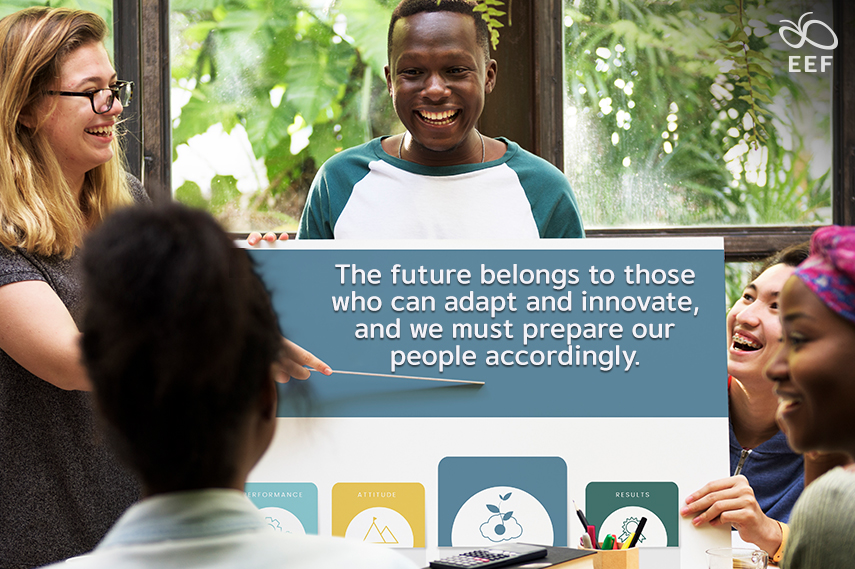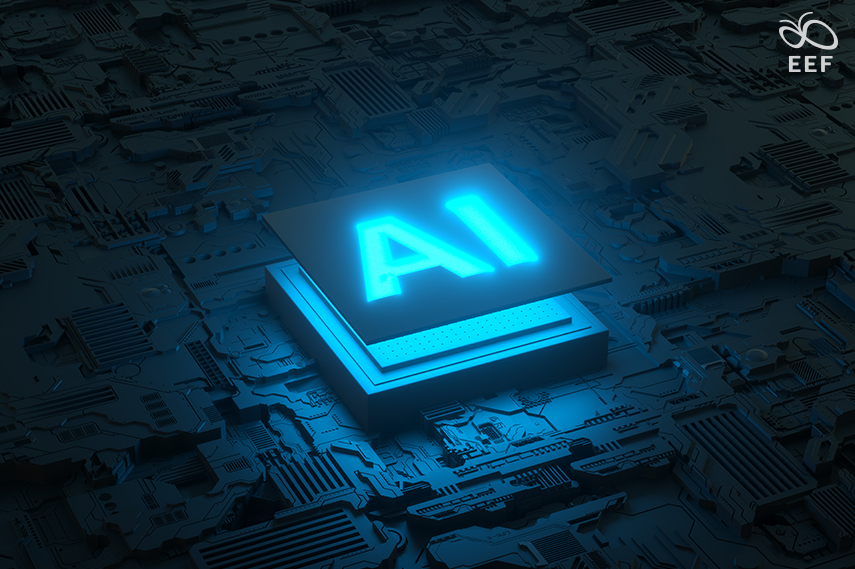
In today’s fast-paced and ever-changing job market, the competition is more cut-throat than ever before, and traditional education alone just will not cut it anymore. As the global economy continues to evolve, we must stay ahead of the curve, continually expanding our knowledge bases to stand out and excel in our careers. This is where Technical and Vocational Education and Training (TVET) comes in; It offers specialized training that develops skills and competencies necessary to succeed in today’s job market — of course, along with general knowledge typically acquired at the high school level — with a mix of instruction, on-the-job experience, and practical training. However, despite the clear advantages, the reality still proves otherwise: TVET programs are still undervalued and underutilized by many. The importance and need for TVET in bridging the growing gap between prospective employees and their respective jobs cannot be overstated, and it is high time to recognize the immense potential of TVET and invest in the future of our workforce.

With technological advancement and globalization, the job market has undergone significant transformations over the past decade, with a decline in manufacturing due to automation and outsourcing and a rise in the service sector driven by AI and robotics. And it is now in a state of constant flux, with old jobs disappearing and new ones emerging and the skills and competencies required for success evolving at an unprecedented pace. Employers are now searching for individuals with the skills and competencies to meet their demands, in particular digital skills.
Unfortunately, there is currently a shortage of workers with the skills and competencies, especially digital skills, with the problem expected to worsen as automation takes over more jobs previously held by humans, and traditional learning approaches are becoming obsolete. Innovative learning approaches that involve digital learning tools are needed to address this challenge, and new digital training programs and incentives must be developed for companies to hire workers who have undergone this kind of training — which has fortunately been happening now. It is more essential than ever to invest in quality TVET that equips learners with the skills and competencies required for tomorrow’s job market, where jobs do not even exist yet.

The future belongs to those who can adapt and innovate, and we must prepare our people accordingly. The focus of TVET must consequently be shifted to turning learners into more an innovative entrepreneurs, rather than just conventional employees. A prerequisite to ensuring that learners have the skills and competencies they need to succeed in tomorrow’s job market, meeting industry standards, is none other than ensuring that TVET is accessible, equitable, and inclusive for all, and integrating technology into all classroom curricula is a critical step that cannot be overlooked. This will enable learners to benefit from technology-enabled experiential learning and hands-on training, exposing them to a broader range of opportunities and resources, ultimately developing the skills and competencies required to excel in tomorrow’s job market, including digital skills.
By providing equal access to these educational resources, regardless of learners’ backgrounds or circumstances, we are leveling the playing field, and promoting greater equity in education. Moreover, technology-based learning can be more flexible, allowing learners to study at their own pace and on their own time, enhancing accessibility and inclusivity. As a result, we are equipping individuals with the skills and competencies they need to adapt and innovate, preparing them for the future of work, and ultimately establishing a brighter, more resilient world for all.
However, the pandemic has dealt a detrimental blow to progress, severely exacerbating existing inequalities, with closures of schools, training centers, and workplaces impacting young people and marginalized communities far more disproportionately. While the global economy struggles to recover from the economic downturn of 2020, countries with weaker economies are suffering more profound, more prolonged blows to their learning, training, and employment rates. Nevertheless, hope remains, as policy-makers and the global education community are actively working to address the issue, and in all this, TVET is a vital player in the race as much to transform education systems and labor markets across the globe, as it is to recover them.
Stepping up to the plate is UNESCO to steer the future of TVET with an exciting new strategy. On October 25th-26th, 2022, UNESCO hosted a hybrid international conference at the UNESCO-UNEVOC International Centre for TVET in Bonn, Germany, where they launched their new 2022-2029 TVET strategy. Titled “Transforming Technical and Vocational Education and Training for Successful and Just Transition,” this strategic roadmap is designed to meet the priorities of individuals, economies, and societies, both present and future, and thus position TVET as a critical tool in rebuilding and fortifying our world’s resilience in the wake of the pandemic. Doing so will also help accelerate progress toward the Sustainable Development Goals (SDGs) over the next eight years.

The new strategy is focused on 3 main lines of action:
- Develop skills for all individuals to learn, work and live:
To support flexible lifelong learning pathways, the key focus must be on inclusion as well as on targeted support and technical assistance to address the disproportionate impact of technology and climate change on marginalized groups, such as women, informal workers, subsistence farmers, and other vulnerable communities.
- Develop skills for inclusive and sustainable economies:
To support job growth, private sector participation, and effective skills anticipation, the key focus must be on the transition toward a digital and green economy, STEM and 21st-century skills, innovation, and strong governance and investment.
- Develop skills for inclusive and peaceful societies:
To support rights-based education for sustainable development, the key focus must be on global and participatory citizenship education, and TVET for social integration and cohesion.
These priorities seek to reignite an ambition for TVET in member states in a way that fits the dynamic and ever-evolving needs of their economies, labor markets, and societies. As such, the “Transforming Technical and Vocational Education and Training for Successful and Just Transition” strategy has been developed in alignment with UNESCO’s 2021 Futures of Education report, calling for a new social contract to repair injustices, bridge skills gaps affecting labor markets, and further learning and career progression for both youth and adults.
Although there are concerns that current education and training programs may not be adequately preparing both youth and adults for the world of work, online platforms are revolutionizing the way people learn about careers and skills. As fewer young people enter the workforce due to changing demographics and economic conditions, it is all the more reason why we need to invest in making sure that TVET is equitable, inclusive, and capable of equipping learners with the skills of tomorrow now. Its role in shaping the future workforce is more important than ever, and we need to act now to prepare for the challenges ahead.
Recently, renowned tech visionary and Microsoft co-founder Bill Gates shared his thoughts on his blog, GatesNotes, where he discussed the implications of AI and boldly declared in its title that “The Age of AI Has Begun: Artificial Intelligence Is as Revolutionary as Mobile Phones and the Internet.” In his writing, he proclaims that with groundbreaking advancements in AI, the world is on the brink of a revolution where humans and machines work together seamlessly. People will soon be able to communicate with their devices using natural language, allowing for easier and more intuitive task management, like having digital personal assistants that can understand and respond to their specific needs, which will further enhance their working experience.
While humans still have the upper hand in certain areas, there are specific roles where AI can provide unparalleled benefits. Sales, customer service, and document handling are just a few examples of roles where AI can assist in streamlining operations and providing personalized services. By being trained on data sets, AI can enhance productivity and save time and resources. And with computing power becoming more accessible and affordable, AI will evolve to the point where it can express ideas and interact with humans naturally, becoming a digital co-pilot for workers.

Despite several ethical implications, with proper implementation, AI can revolutionize the way people work, freeing up time for more meaningful endeavors. In the field of education, it could even help reduce inequities if targeted correctly. The future of work will be all about collaboration between humans and machines, each bringing their unique skill set to the table. It is time to embrace this change and explore how AI can help us work more efficiently while prioritizing the well-being of workers. With the careful implementation and proper training, AI can be harnessed to uplift humanity, creating a brighter future for all of us, not the other way around.
The landscape of TVET is on a rollercoaster ride of change, influenced by a range of factors, and there is no slowing down it. Technological advancements have revolutionized and will continue to revolutionize, the way we learn. Now, we can access knowledge from anywhere in the world with a single click, with artificial intelligence and machine learning poised to replace human teachers. This might seem like a daunting prospect, but it could lead to even better education quality due to enhanced efficiency and access to resources that are not available today, as well as better education outcomes by providing individualized instruction based on each learner’s needs.
The future of TVET and the job market lies in the hands of educators, learners, and employers, and it is our duty to prepare our people for a world that is changing at a breakneck pace. This is in line with the mission of the Equitable Education Fund (EEF) Thailand, which is to reduce education and employment inequality through research, collaboration, and support for children, youth, and adults in need.
Source:

